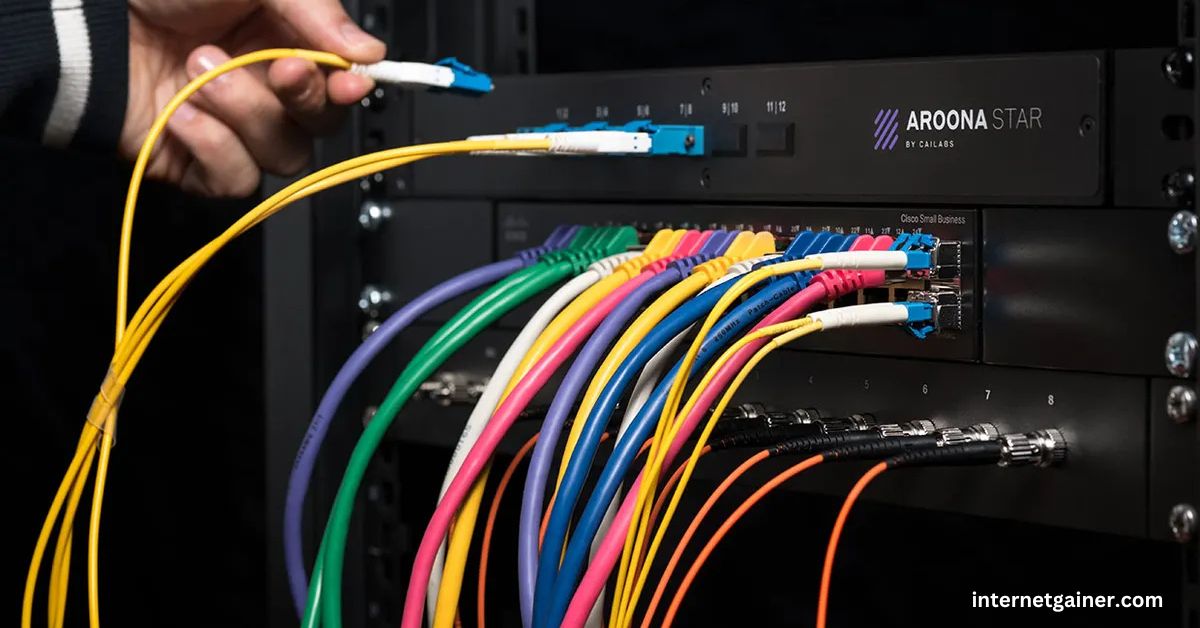If you’re considering upgrading to fiber internet, one of the first questions you’ll likely ask is, “How long will the installation process take?” The answer can vary depending on your location, the provider, and other factors, but typically, fiber internet installation can range from a few days to two weeks. Understanding the process step-by-step will help set expectations and ensure you’re well-prepared.
1. Scheduling Your Fiber Internet Installation (1-5 Days)
The very first step in the process is scheduling the installation. After you’ve signed up for a fiber internet plan, you’ll be asked to choose a time for a technician to come to your home. Depending on the availability of the service provider and your location, this can take anywhere from 1 to 5 days. In more populated urban areas, scheduling might be quicker, whereas in rural or less serviced areas may require a longer wait.
This step doesn’t require much from the customer, as the provider will usually confirm the time and date based on availability in your area. However, if you need to coordinate with other contractors or request a specific date, the wait could be slightly longer.
2. On-Site Equipment Installation (2-4 Hours)
Once the appointment is set, a technician will visit your home to begin the installation. The on-site installation usually takes between 2 to 4 hours. During this phase, the technician will set up the necessary hardware, including the fiber modem, router, and Network Interface Device (NID). This process is generally straightforward if your home already has some existing network infrastructure in place.
The technician will also assess your home to determine the best placement for the modem and other devices, ensuring optimal signal strength. This part of the process can be quick, but if any extra wiring or equipment is needed, it may take slightly longer.
3. Installing Fiber Lines and Conduit (5-14 Days)
If fiber lines are not already available in your area, this phase can add significant time to the installation process. The provider may need to lay conduit and install fiber optic cables in your neighborhood. Fiber line installation can take anywhere from 5 to 14 days depending on the complexity of the task and local regulations.
This step involves digging trenches or drilling through walls and streets, which requires permits and careful planning. Weather conditions, local regulations, and the need to coordinate with other utilities (e.g., water, gas, or electric lines) can cause delays. In urban areas where fiber lines are already in place, this step may not be required, shortening the installation process.
4. Connection to the Fiber Network (5-7 Days)
Once the fiber lines are laid and ready, the technician will connect your home to the fiber internet network. This step typically takes between 5 to 7 days. The technician will ensure that your home is physically connected to the fiber optic network, allowing you to receive high-speed internet service.
During this stage, the technician may need to test the line for signal strength and troubleshoot any issues. If your home is in a region with already established fiber infrastructure, this step can be completed faster.
5. Activation and Testing (1-3 Days)
Once the fiber line is in place and connected, the final step is activation. The technician will test the connection to ensure everything is functioning properly. This testing phase typically takes 1 to 3 days, during which the provider will also check for signal strength, reliability, and any potential network interference.
After this step, your fiber internet will be activated, and you’ll be able to start using it right away.
Factors That Affect Fiber Internet Installation Time
While the general timeline for fiber installation can range from a few days to two weeks, several factors can influence how long it will take:
- Location: Urban areas with existing infrastructure generally experience faster installation times, while rural or underserved areas might take longer due to the need for new fiber lines.
- Availability of Fiber Infrastructure: If fiber is already installed in your neighborhood, the process will be quicker. However, if your area is being newly connected, it will take longer.
- Weather Conditions: Poor weather can delay the process, especially when digging trenches or laying fiber lines outdoors.
- Permits and Regulations: In some cases, local regulations may require special permits before installation can begin, which can add to the timeline.
Additional Considerations for Fiber Internet Installation
1. Costs:
Some providers offer free installation as part of a promotion or service package. However, if the installation requires significant work (such as digging trenches or running long fiber cables), there may be additional costs. It’s important to check with your provider beforehand to understand any potential charges.
2. Equipment Compatibility:
Make sure your existing router is compatible with the high-speed fiber internet. If not, you might need to upgrade your router to one that supports faster speeds. Many providers will offer a modem/router package as part of the installation.
3. Potential Delays:
While fiber internet installation is generally a straightforward process, there are always potential delays. These can be caused by scheduling conflicts, local permits, or external factors like bad weather or utility work. It’s a good idea to stay in touch with your provider for updates.
Conclusion: What You Can Expect During Fiber Internet Installation
In conclusion, the installation of fiber internet typically takes between a few days and two weeks. The exact timeline will depend on various factors, such as the availability of fiber infrastructure in your area, the complexity of the installation, and local regulations.
Overall, fiber internet provides incredibly fast speeds and reliability, making it well worth the wait. Whether you’re setting up fiber for home use or upgrading your business, the installation process is generally smooth and efficient, allowing you to enjoy high-speed internet as quickly as possible. For more Internet plans information check the internetgainer.
